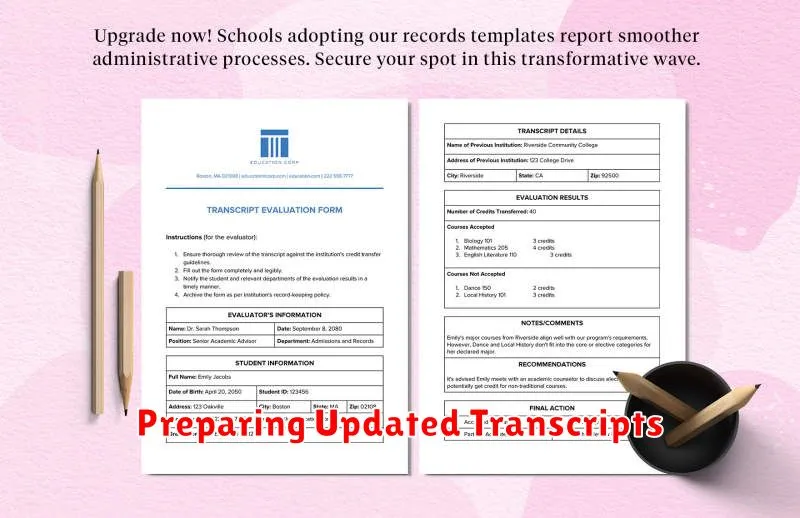Transferring between universities can be a complex process, but transferring internationally adds another layer of difficulty. This article serves as a comprehensive guide for students seeking to navigate the intricacies of international university transfers. We will cover crucial aspects of the process, from selecting the right university and understanding international academic requirements to managing the application process and ensuring a smooth transition to a new country and academic system. Whether you are considering transferring from a university in your home country to an international university or are already studying abroad and wish to transfer to a different institution, this guide will equip you with the necessary knowledge and resources.
Successfully transferring internationally requires careful planning and execution. This article will address common concerns students face, such as credit transfer, visa requirements, language proficiency tests, and cultural adjustments. Understanding these key elements of an international university transfer is essential for a seamless transition. We will provide practical advice and actionable steps to help you manage the process effectively, ensuring your transfer experience is as smooth and rewarding as possible. By following the guidelines presented here, you can successfully navigate the complexities of an international university transfer and achieve your academic goals.
When Is It Worth Transferring?
Transferring universities is a significant decision, and it’s crucial to weigh the pros and cons carefully. Consider transferring if your current university isn’t meeting your academic, social, or career needs. This might include a lack of desired programs, dissatisfaction with the teaching quality, or a poor cultural fit.
Academic reasons for transferring might involve pursuing a specialized degree program not available at your current institution. Social factors could include feeling isolated or struggling to connect with the campus community. Career-driven transfers might stem from a desire to attend a university with stronger connections to your chosen industry or better internship opportunities.
It’s also important to consider the potential drawbacks. Transferring can be time-consuming, involving application processes and potentially losing credits. There are also financial implications to consider, such as application fees and potentially higher tuition at the new institution.
Understanding Credit Transfer Policies
Credit transfer policies dictate how courses completed at one institution apply towards a degree at another. These policies vary significantly between universities and even between departments within the same university. Understanding these policies is crucial for a smooth international transfer.
Before applying to a new university, thoroughly research their credit transfer policy. Look for information regarding:
- Minimum Grade Requirements: Many universities only accept transfer credits for courses where a certain minimum grade was achieved.
- Course Equivalency: Determine if your previous coursework aligns with the intended program’s curriculum. Even similarly named courses may not fulfill the same requirements.
- Maximum Transferable Credits: Some universities limit the number of credits that can be transferred from another institution.
- Transfer Credit Application Process: Understand the required documentation and deadlines for submitting transfer credit requests.
Contact the admissions or international student office at your prospective university for clarification on any questions. Provide them with detailed course descriptions and syllabi from your previous institution to facilitate the evaluation process.
Contacting Admissions and Registrars
Reaching out to both the admissions office and the registrar at both your current and prospective universities is crucial. Admissions offices handle the application process and can advise on transfer credit evaluation and admission requirements. Registrars maintain official academic records and can provide necessary documents like transcripts and course descriptions.
Initiate contact early in the transfer process. Inquiries should include questions about application deadlines, required documents, transfer credit policies, and any specific requirements for international students. Clearly state your intention to transfer and provide relevant information like your current program, intended program, and previous academic history.
Direct contact, either via email or phone, is often more efficient than relying solely on website information. Keep records of all communication, including dates, times, and the names of individuals you speak with. This documentation will be valuable throughout the transfer process.
Preparing Updated Transcripts

Requesting and preparing your updated transcripts is a crucial step in the international university transfer process. Ensure you request transcripts from all previously attended post-secondary institutions, including community colleges, summer programs, or any institution where you earned college credit.
Contact your previous institution’s registrar or records office to initiate the transcript request. Be aware of potential processing times, which can vary between institutions and may be longer during peak periods. Some universities may offer electronic transcript delivery, which is generally faster than traditional mail. Verify the receiving institution’s preferred method of delivery.
Official transcripts are typically required, meaning they are sent directly from your previous institution to your prospective university. Unofficial transcripts or copies are generally not accepted.
If your transcripts are not in English, you’ll likely need certified translations. Contact your prospective university to determine their specific translation requirements.
Visa and Legal Considerations

Transferring universities internationally involves significant visa implications. Visa regulations vary greatly depending on the host country and your nationality. It is crucial to research the specific requirements of your destination country well in advance.
You may need to switch from a student visa to a different type of visa, or amend your existing student visa to reflect the new institution. Failing to comply with visa regulations can lead to serious consequences, including deportation. Consult with the embassy or consulate of your destination country for the most up-to-date and accurate information.
Ensure you understand the implications for your current visa status before withdrawing from your current university. Leaving your current institution might impact your current visa validity, so meticulous planning is essential.
Timing Your Transfer Effectively
Timing is a crucial factor in a successful international university transfer. Understanding application deadlines and academic calendars is essential.
Research the academic calendar of your target university. Note the start and end dates of semesters or terms, and identify key deadlines for application submission, transcript requests, and financial aid.
Begin the transfer process at least one year in advance. This allows ample time to research universities, prepare application materials, and meet all deadlines. Some universities have rolling admissions, while others have fixed deadlines. Be aware of these differences.
Consider your current academic standing. Transferring after completing a certain number of credits, such as after your first or second year, can streamline the process. Consult with an academic advisor at both your current and prospective universities to determine the optimal time to transfer based on your academic goals and degree requirements.
Cultural Adjustment and Support Services
Transferring to a university in a new country involves significant cultural adjustments. Understanding the local customs, social norms, and academic environment is crucial for a successful transition.
Culture shock is a common experience for international students. Feelings of disorientation, homesickness, and difficulty adapting are normal. Universities recognize these challenges and offer various support services to help students acclimate.
These services often include:
- Orientation programs: These programs provide practical information about the university and the local culture.
- International student advisors: Advisors offer guidance on academic, social, and personal matters.
- Cultural exchange programs: These programs facilitate interaction between international and domestic students.
- Counseling services: Confidential support is available for students experiencing emotional or psychological difficulties.
Utilizing these resources can significantly ease the transition and contribute to a positive and enriching study abroad experience.

